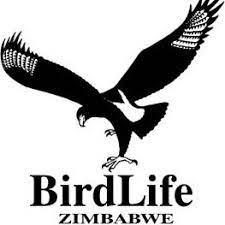IMPORTANT BIRD AREAS
Z009 Sebakwe Poort
PARTIALLY PROTECTED
SUB-REGIONAL IBA (C4i)
18°51 ‘S; 29°44’E
c. 3 ha
SITE DESCRIPTION
Ten kilometres downstream of Kwekwe town (which is the geographical centre of Zimbabwe), and to its northwest, the Sebakwe River flows through a gorge in a small range of hills. The ‘poort’, as it is known, is quite startling in its abruptness as it appears suddenly, with cliffs up to 100 m in height; and just as suddenly, after a gorge of about 300 m in length, the hills end. The river is up to 40 m wide, and there are almost no screes. The range of hills has a high point of 1 283 m a.s.l., and the river flows westwards through them at an altitude of c. 1150 m a.s.l. The area is completely wooded with miombo and Acacia spp. lining the riverbanks. There is a wide diversity of tree species on the range of hills.
BIRDS
No threatened or restricted-range species live here. As yet, no inventory has been made of the bird species, though it is likely that many Zambezian (miombo) ‘specials’ occur. The poort annually supports 6-9 pairs of breeding Black Stork Ciconia nigra, all but one pair being on the south cliff and facing northeast. In 1996, nine pairs were present; in 1997, six pairs. In Zimbabwe, there are several mines and quarries where up to four pairs nest together, but Sebakwe Poort is the largest colony. Also nesting on the cliffs are one pair of Peregrine Falcon Falco peregrinus (in 1997 for the first time in several years) and one pair of Lanner Falcon Falco biarmicus.
CONSERVATION ISSUES
The gorge is several kilometres downstream of the Lancashire Steel factory, which makes steel, wire and mesh. Several small gold mines are found nearby on the east flank, so there is potential disturbance from pedestrian traffic. The land belongs to Sebakwe Farms, a subsidiary of Sable Chemical Industries. The poort itself, and the surrounding area, is leased to the National Trust as a nature reserve, and is under the local supervision of the estate’s manager. Some patrolling is done. Illegal wood-cutting and snaring probably occurs. Undoubtedly, there is pollution contamination in the Sebakwe River, and not just from the factory. The Sebakwe, and its main tributary the Bembezana, flow through a major barley growing area to the east of Kwekwe, with consequent run-offs of fertiliser and pesticides. As only a single species satisfies the 1% criterion, the site is best regarded as a Sub-regional IBA.
1% or more of population
Black Stork – Breeding (pairs) – 6 – 9 | Total Numbers – 12 – 27
